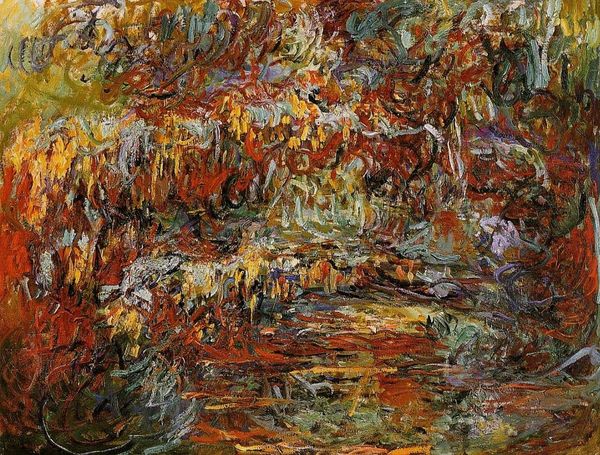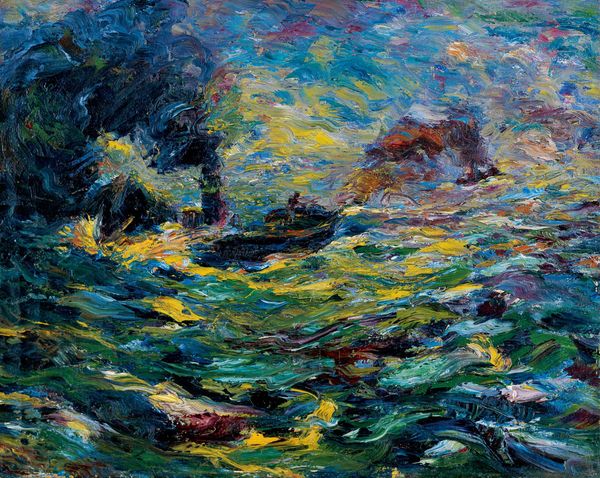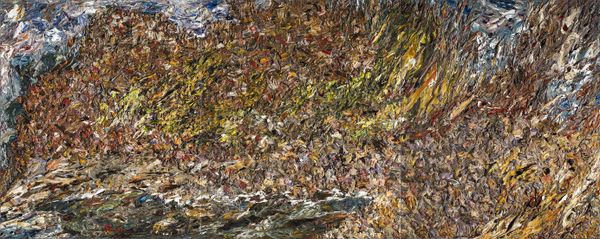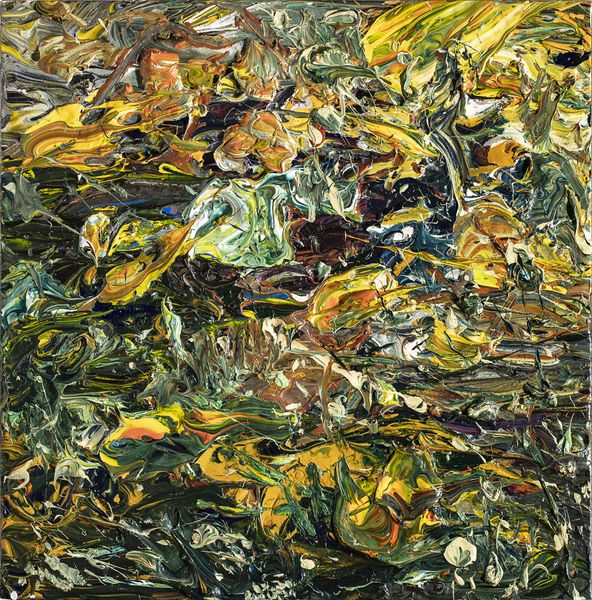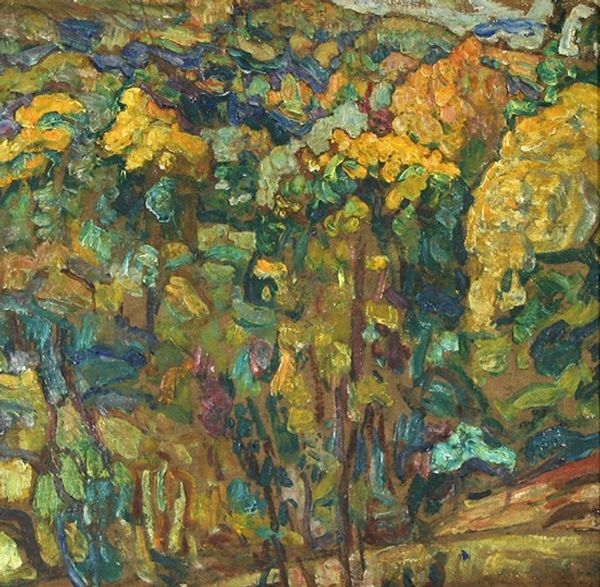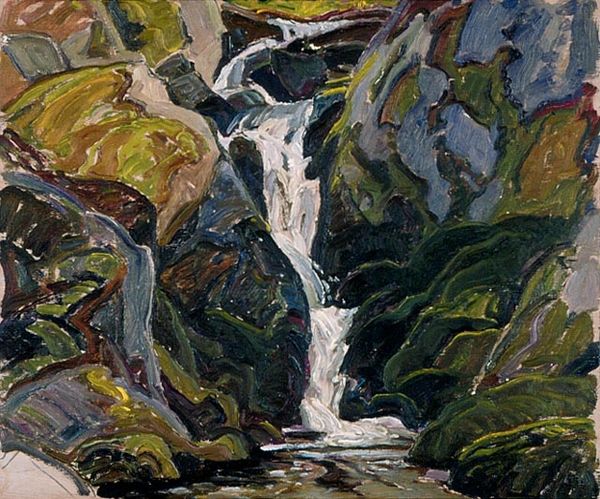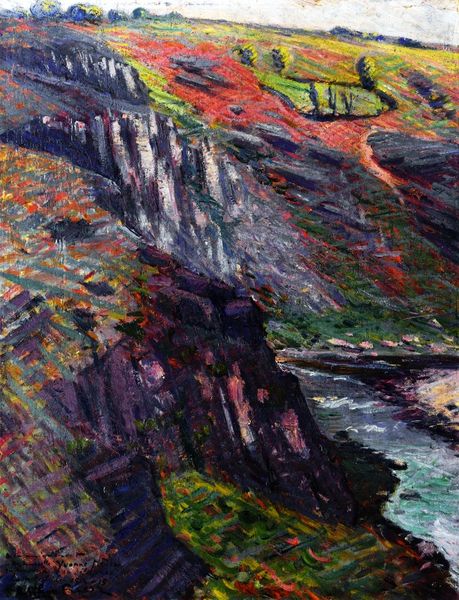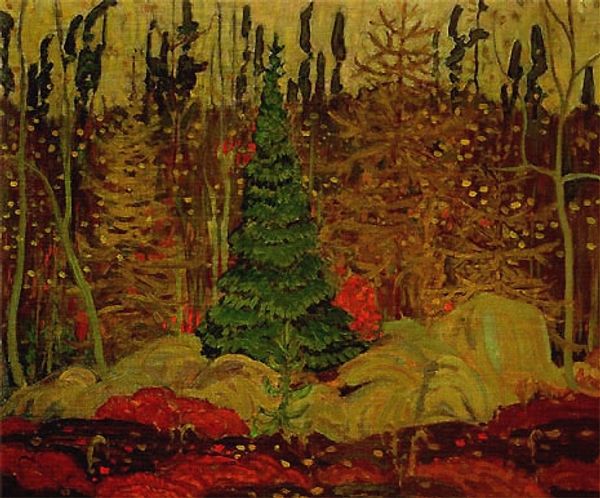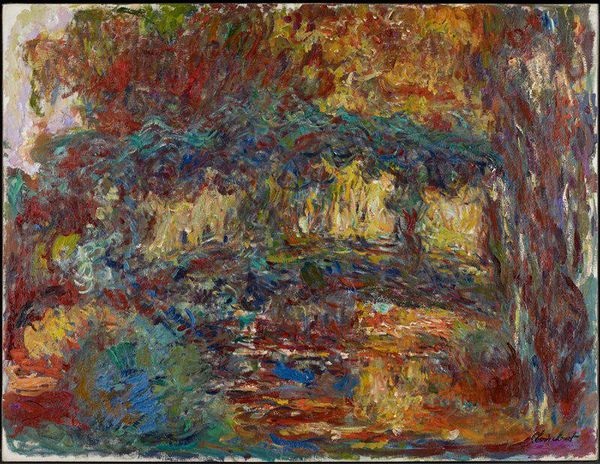
Copyright: Public domain
Curator: J.E.H. MacDonald painted this oil on canvas, “Leaves in the Brook,” in 1919. Editor: What a flurry of browns and oranges. It almost gives one the feeling of peering into an active beehive or ant colony, a dense and buzzing little world! Curator: MacDonald’s work often explores the Canadian landscape through an Impressionistic lens. He was a central figure in the Group of Seven, known for their bold depictions of the northern wilderness. It’s interesting to note the historical context; this work emerges from a period of burgeoning national identity in Canada after World War I. Editor: Yes, and look at how the dabs of colour articulate the textures. It’s a marvel of visual interplay. The contrasts, especially in that upper quadrant, make it a prime example of form creating spatial illusion. Observe, too, how the paint itself becomes part of the scene. The materiality mirrors nature. Curator: His process typically involved quick sketches en plein air that captured the essential features of the landscape. These then served as references for more elaborate studio paintings. It underscores his desire to connect with nature. He wanted to immerse himself in the present, not just render nature accurately, but viscerally. Editor: The painting surface does suggest a rapid execution. Despite the detail, the piece appears very immediate and unplanned. Perhaps the loose brushstrokes were to make nature become like one giant unified abstraction where everything interacts, nothing truly separate. Curator: That ties to the artist's political ideology too. MacDonald was drawn to themes of Canadian identity and celebrated the working class and ordinary citizens within his works. Nature acted like an egalitarian common ground. It’s less about individualism, more about harmony. Editor: And the dynamism of those leaf patterns certainly echoes your view; that interconnectedness does strike one deeply. In essence, his "Leaves in the Brook" demonstrates that what looks simple on the surface actually has more depth within it. Curator: Absolutely, his oeuvre makes nature more than just landscape: it's a repository for history and cultural narrative.
Comments
No comments
Be the first to comment and join the conversation on the ultimate creative platform.
